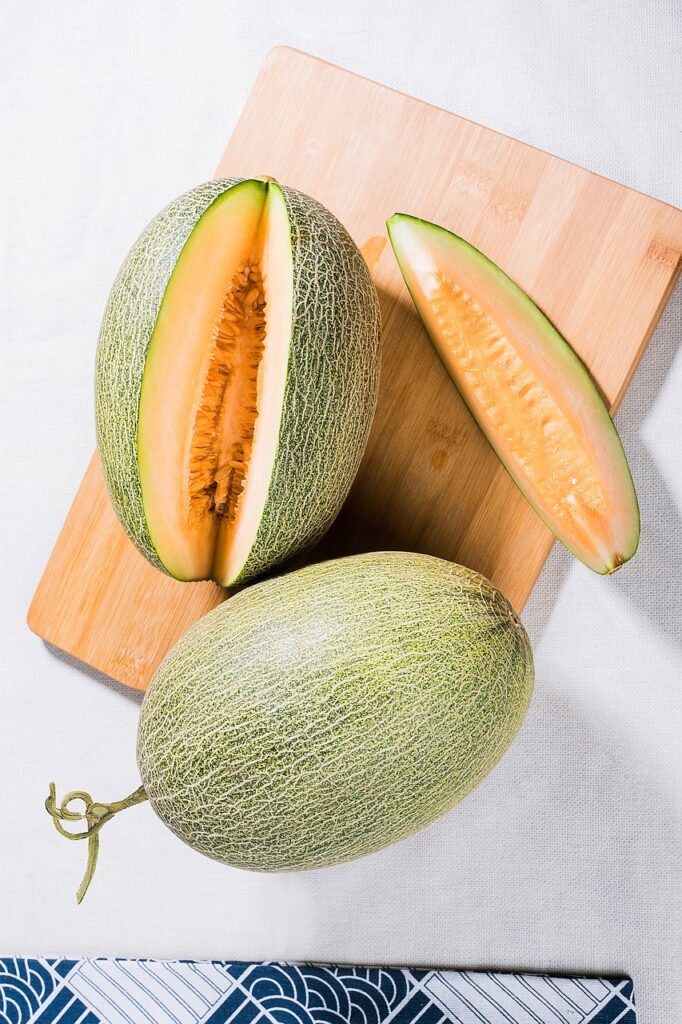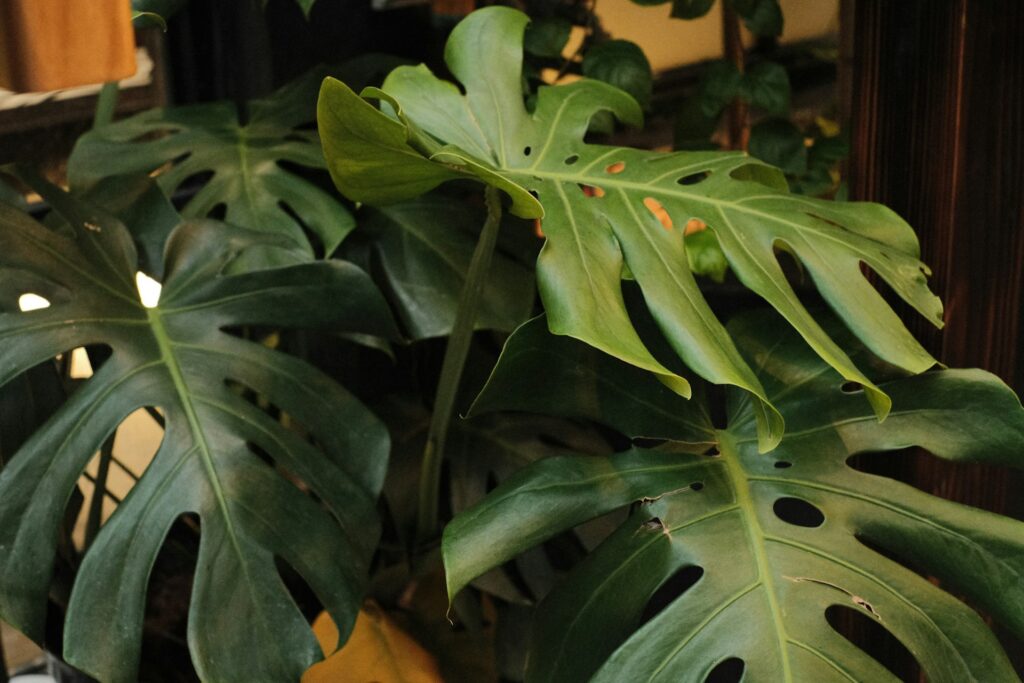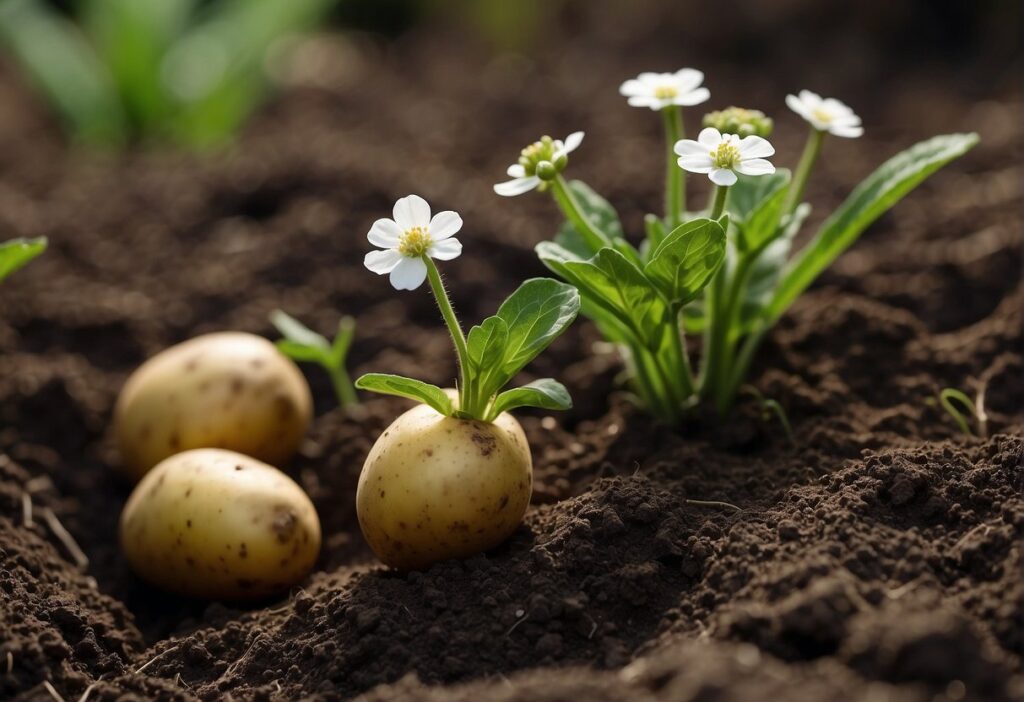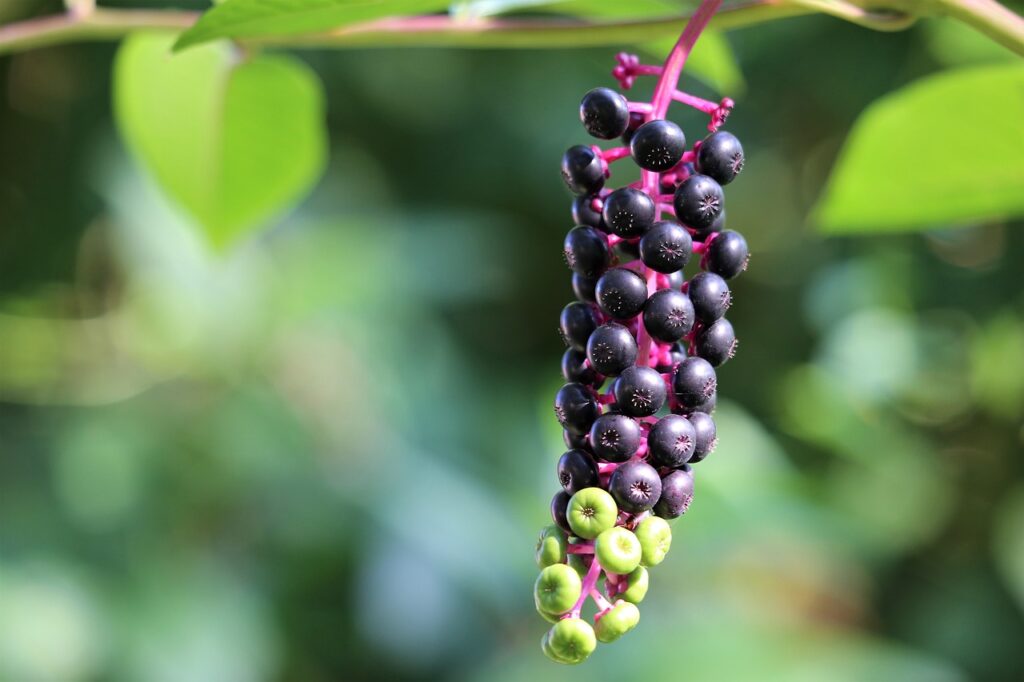
When faced with an underripe watermelon, one might consider it a culinary disappointment. However, if one finds themselves with a watermelon that’s less than perfect on the inside, there are various creative and practical actions to take. Understanding the characteristics of underripe melons is the first step to making the best use of them. If a watermelon lacks the expected sweetness and texture, it might still be salvageable through specific techniques aimed at enhancing its natural flavor or incorporating it into recipes that mask its underdevelopment.
Sometimes, with time and the right conditions, an underripe watermelon can reach a stage of improved ripeness. Although ripening of watermelons mainly occurs on the vine, slight changes can occur post-harvest. If waiting for a change in ripeness isn’t an option, there are multiple innovative culinary applications for underripe watermelon that deliver satisfying results. These uses range from savory dishes to sweetened concoctions, ensuring that your watermelon doesn’t go to waste.
Key Takeaways
- Recognize underripe watermelons by their firmness and lack of sweetness.
- Slight ripening can occur after harvest, affecting the fruit’s texture and taste.
- Underripe watermelon can be utilized in a variety of recipes, both savory and sweet.
Identifying Underripe Watermelons
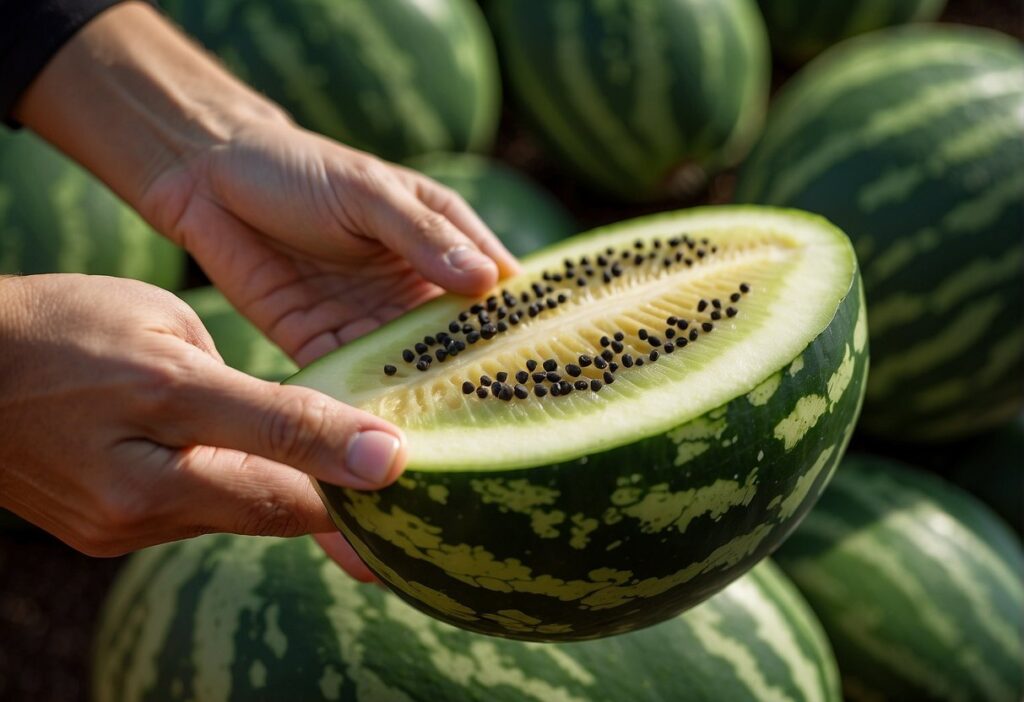
Identifying an underripe watermelon involves inspecting visual cues and conducting simple physical tests. These methods can help determine whether a watermelon has reached its optimal ripeness before purchasing or cutting it open.
Visual Indicators
Color: An underripe watermelon typically has a lighter green hue as opposed to a fully ripened fruit which exhibits a darker green color. One should look for a lack of vibrant color overall.
- Field Spot: The field spot is the area where the watermelon rested on the ground. For underripe watermelons, this spot may be white or very light yellow, while a ripe watermelon’s field spot is a creamy yellow tone.
Physical Tests
Weight: When picked up, an underripe watermelon may feel lighter for its size. A ripe watermelon, in contrast, will feel heavier due to the higher water content.
Thump Test: By thumping the outer surface, one may notice that underripe watermelons produce a higher-pitched sound, whereas a ripe one has a deep, hollow sound when tapped.
Tendril: Near the fruit’s stem, a green curly tendril can be observed. If this tendril is still green and pliable, the watermelon is often not ripe. A dried tendril suggests the fruit may be ripe.
Utilizing these visual indicators and physical tests can effectively gauge the ripeness of a watermelon.
Enhancing the Sweetness of Underripe Melons
An underripe watermelon may lack the natural sweetness that one expects in every juicy bite. However, certain techniques can enhance the sweetness of the flesh, making the fruit more enjoyable.
Using Salt and Sugar
Salt can paradoxically amplify the perception of sweetness in watermelons by affecting the taste buds. Sprinkling a pinch of salt on the watermelon cubes before consumption can lead to a sweeter taste. In contrast, sugar can be directly used to sweeten the watermelon. A method to do this is through the preparation of a simple syrup. Combine equal parts water and sugar, then heat until the sugar dissolves completely. Cooling this syrup and gently tossing it with the watermelon can heighten the fruit’s sweetness.
| Ingredient | Quantity | Purpose |
|---|---|---|
| Salt | Pinch | Enhances sweetness |
| Sugar | To taste | Adds sweetness |
| Water | Equal to sugar quantity | Dissolves sugar for syrup |
Heat Treatment
Applying heat to underripe melons can also enhance their sweet flavor. Grilling watermelon slices over low heat allows the natural sugars to caramelize, developing a rich sweet taste and aroma. This technique is not exclusive to watermelons and can be applied to other melons like honeydew and cantaloupes. The heat causes a Maillard reaction which not only sweetens the melons but also adds a unique savory note that can be very appealing.
| Method | Temperature | Effect |
|---|---|---|
| Grilling | Low heat | Caramelizes sugars, enhances sweetness |
By using these techniques, one can adjust the sweetness of underripe melons and improve their overall flavor.
Creative Uses for Underripe Watermelon
While an underripe watermelon might lack the sweetness of its ripe counterpart, its firmer texture and less pronounced flavor make it a versatile ingredient for various culinary experiments, extending its utility beyond simple fruit salads.
Savory Dishes
Underripe watermelon acts as a great addition to savory dishes because of its crunchy texture. It works well in:
- Salads: Add cubes of underripe watermelon to a Greek salad or mix them with arugula, feta, and a balsamic glaze.
- Grilling: Slice the watermelon into thick steaks and grill them for a charred, smoky flavor that complements a savory spice rub or marinade.
Watermelon-Based Beverages
Though an underripe watermelon is not as sweet, it can still be used to create refreshing beverages:
- Watermelon Agua Fresca: Combine watermelon, lime juice, and a touch of sweetener in a blender, then strain for a refreshing agua fresca.
- Smoothies: Use watermelon as a base for smoothies, pairing it with other fruits, and a hint of honey or agave to enhance the flavor.
- Sorbets: Puree watermelon and use it in place of other fruits in a homemade sorbet recipe.
Pickled Treats
The firmer texture of underripe watermelon makes it ideal for pickling:
- Watermelon Rind Pickles: Utilize the rind by pickling it with a brine of vinegar, sugar, and spices for a tangy, crunchy snack.
- Watermelon Salsa: Dice the flesh and combine with ingredients like onion, jalapeño, and cilantro to prepare a salsa that’s perfect with chips or over grilled fish.
Conclusion
When faced with an underripe watermelon, one has several options to salvage its potential. Creativity is key in utilizing the firm texture and less sweet flavor. One can consider:
- Pickling: Transforming the underripe fruit into a savory delight.
- Juicing: Blending with other fruits or sweeteners to enhance taste.
- Cooking: Incorporating into dishes like stir-fry or curry for a unique twist.
They should remember that although these watermelons lack the ideal sweetness and texture, they can still be valuable in the kitchen. Each method offers an opportunity to enjoy the fruit in a new way.
Here are some tips for identifying the ripeness of a watermelon in the future:
- Check the field spot; a creamy yellow color indicates ripeness.
- Tap the melon; a ripe one echoes a hollow sound.
- Observe the firmness; a ripe watermelon should be firm but not hard.
It is important to select ripe watermelons when possible to enjoy the best flavor and texture. However, when one encounters an unripe watermelon, these alternatives can help make the most of it.

